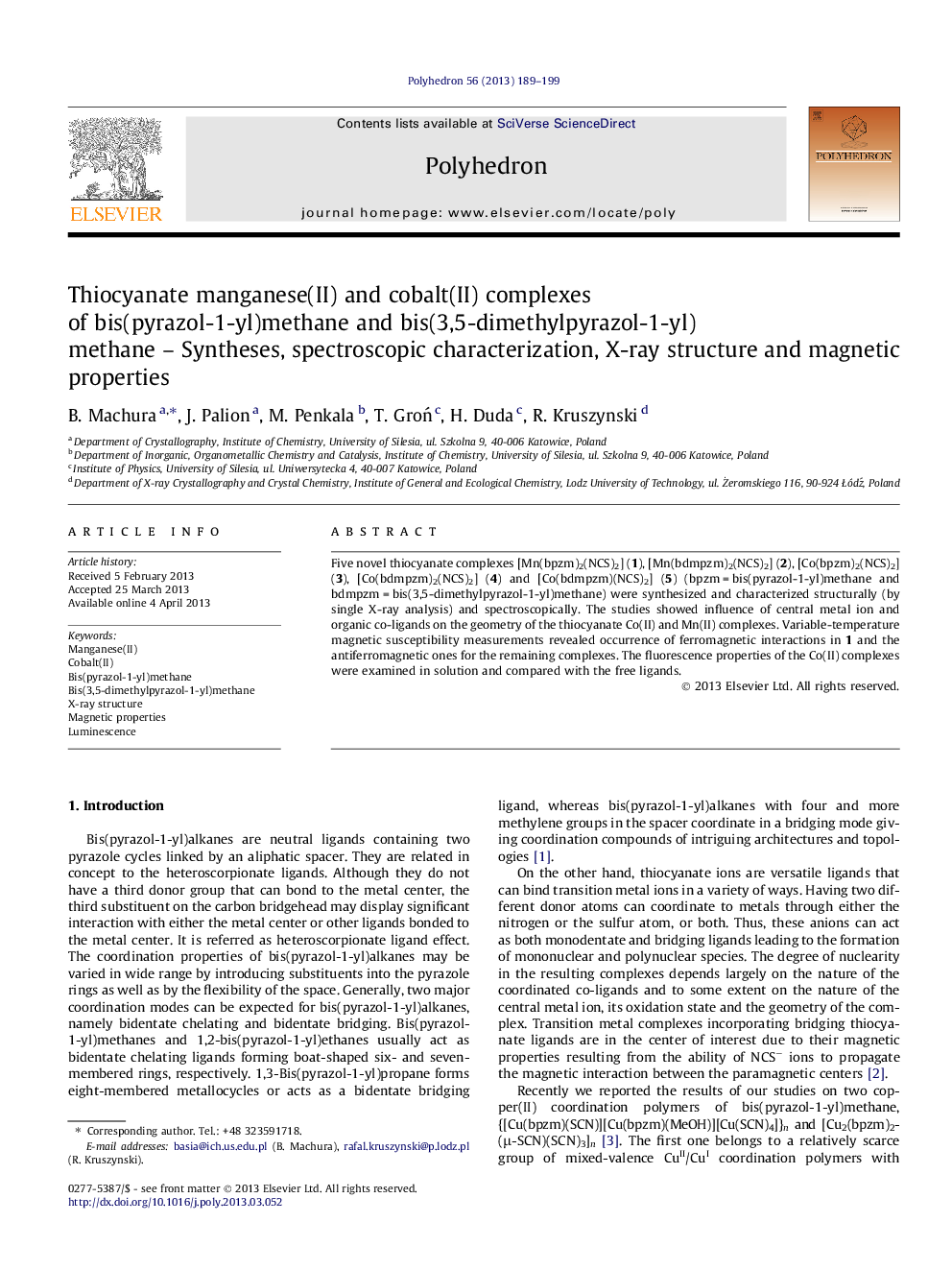| Article ID | Journal | Published Year | Pages | File Type |
|---|---|---|---|---|
| 1336877 | Polyhedron | 2013 | 11 Pages |
Five novel thiocyanate complexes [Mn(bpzm)2(NCS)2] (1), [Mn(bdmpzm)2(NCS)2] (2), [Co(bpzm)2(NCS)2] (3), [Co(bdmpzm)2(NCS)2] (4) and [Co(bdmpzm)(NCS)2] (5) (bpzm = bis(pyrazol-1-yl)methane and bdmpzm = bis(3,5-dimethylpyrazol-1-yl)methane) were synthesized and characterized structurally (by single X-ray analysis) and spectroscopically. The studies showed influence of central metal ion and organic co-ligands on the geometry of the thiocyanate Co(II) and Mn(II) complexes. Variable-temperature magnetic susceptibility measurements revealed occurrence of ferromagnetic interactions in 1 and the antiferromagnetic ones for the remaining complexes. The fluorescence properties of the Co(II) complexes were examined in solution and compared with the free ligands.
Graphical abstractThe paper presents five novel thiocyanate complexes [Mn(bpzm)2(NCS)2] (1), [Mn(bdmpzm)2(NCS)2] (2), [Co(bpzm)2(NCS)2] (3), [Co(bdmpzm)2(NCS)2] (4) and [Co(bdmpzm)(NCS)2] (5) ((bpzm = bis(pyrazol-1-yl)methane and bdmpzm = bis(3,5-dimethylpyrazol-1-yl)methane). The compounds were identified by single X-ray analysis and spectroscopic methods. The studies show strong influence of central metal ion and organic co-ligands on the geometry of the thiocyanate transition metal complexes. For all compounds variable-temperature magnetic susceptibility measurements were performed and their magneto-structural properties were discussed. The fluorescence properties of the Co(II) complexes were examined in solution and compared with the free ligand.Figure optionsDownload full-size imageDownload as PowerPoint slide
